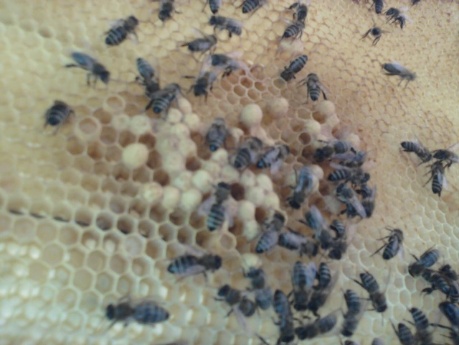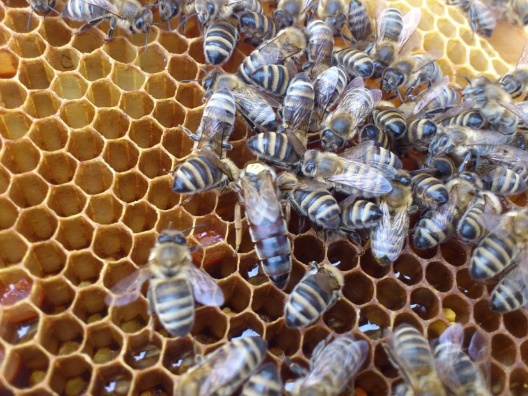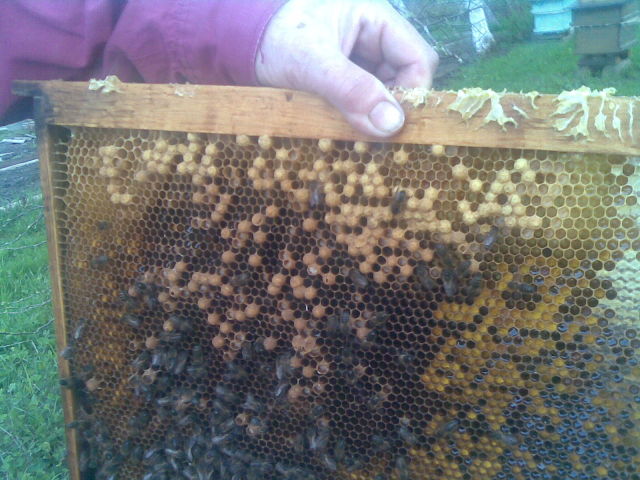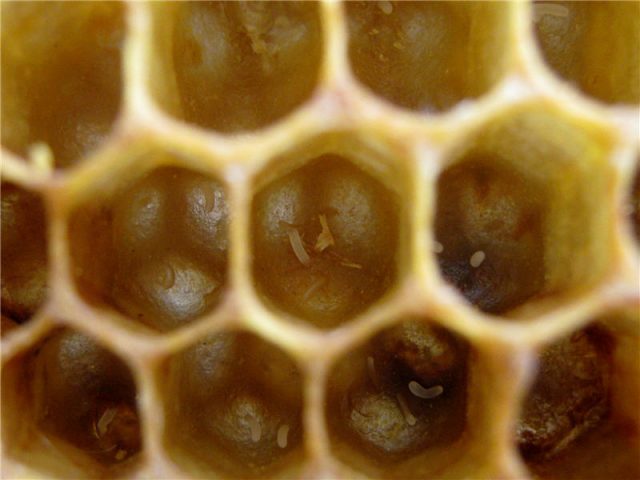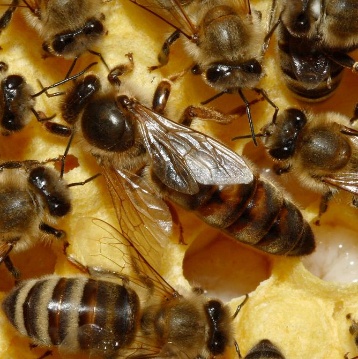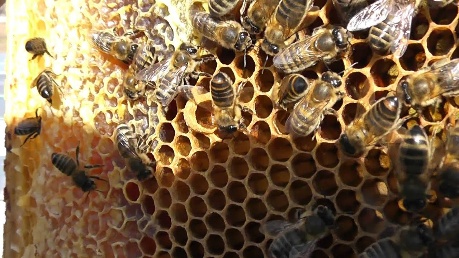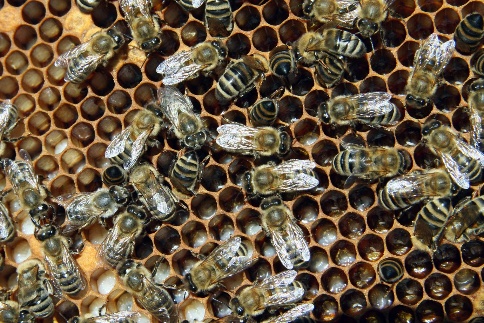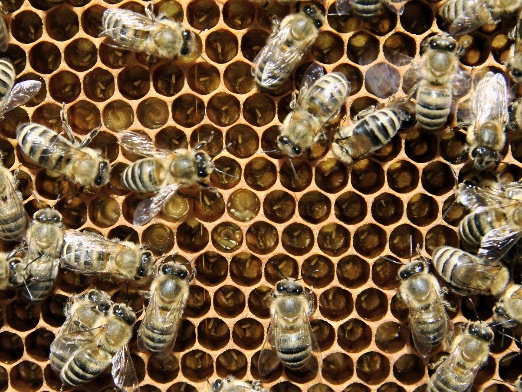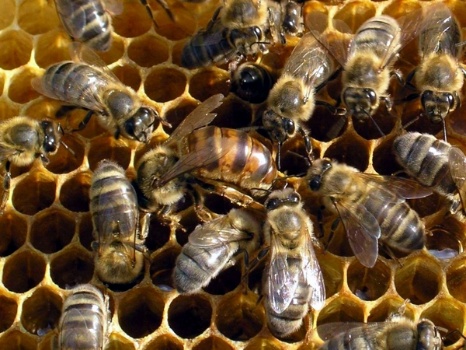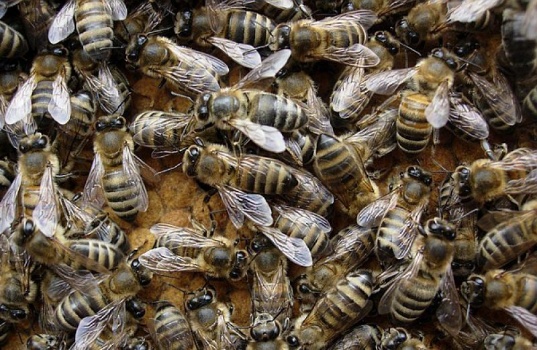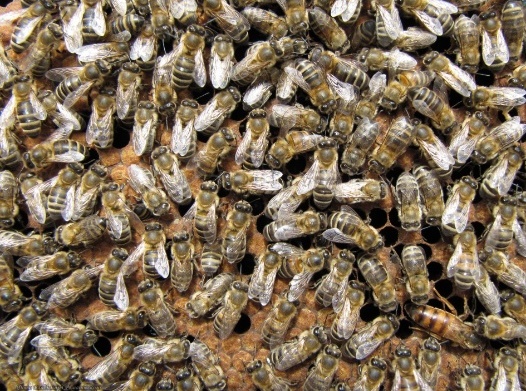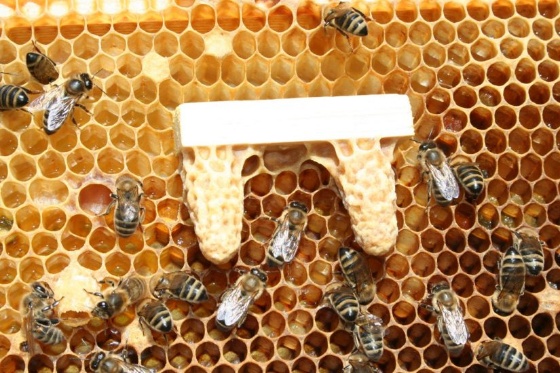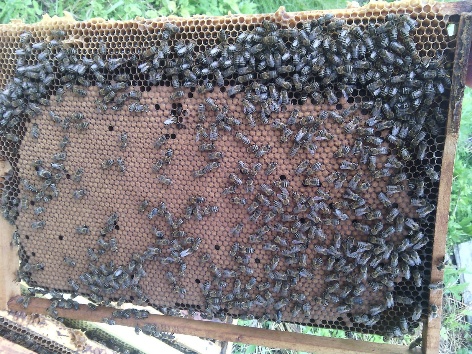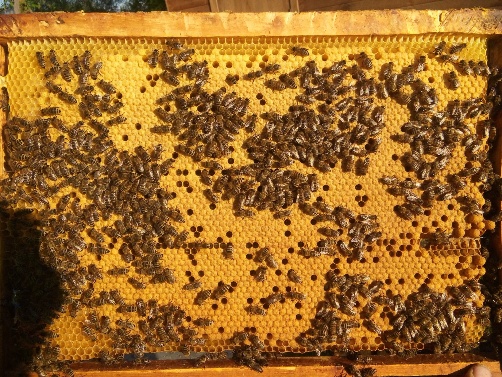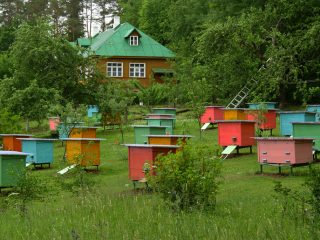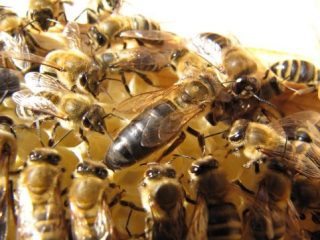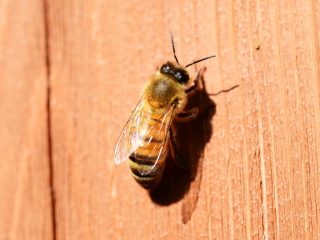Content
The term "tinder", depending on the context, can mean a bee colony, and an individual bee, and even an unfertilized queen. But these concepts are closely related to each other. A family becomes a tinderpot if the role of a queen is played by a tinder bee. And a bee can appear in a family only if a full-fledged female is lost.
Who are the tinder
If the queen dies in the colony, the bees after a while begin to feed each other with royal jelly. Since milk contains hormones that stimulate egg-laying, some of the bees who have eaten "inappropriate" food are reborn.
A common bee is an underdeveloped female incapable of laying eggs. But the bee, stimulated by royal jelly, begins to develop ovipositor. The number of ovipositor can reach 12.
Such a female begins to lay eggs. But since she has neither a seminal receptacle nor spermatozoa in it, then she can only lay eggs with a haploid set of chromosomes. That is, to produce drones. From the point of view of gathering supplies and the further survival of the family, drones are useless. The already existing livestock of workers will not be able to work for everyone, and in winter the colony will die of hunger.
A family in which the queen is absent, but there is a reborn worker, is also called tinder for short. And the difference between concepts depends on the context.
But this means that the queen is too old and unable to fully sow eggs. In any case, the presence of only drone seeding is a reason to be wary and take a closer look at the colony.
Tinder bees
Due to the long absence of a real queen, her role can be assumed by an ordinary bee, which for some time fed on royal jelly and began to lay unfertilized eggs. Although workers may begin to treat such a tinder bee as a real queen, only drones can emerge from unfertilized eggs.
Since the drones require a lot of space in the cells, the bees cover the combs with convex lids. The set of cells covered with similar caps is called "humpback seeding". The appearance of a humpback sowing in a hive is a signal that the family is turning into a tinderpot.
When such a sowing appears, the beekeeper should carefully examine the swarm. If the real female is not found, urgent measures must be taken to save the colony.
If tinder bees appeared in the presence of a real queen, this means that the queen must be changed: she is too old. Many beekeepers prefer to change females every year or two to prevent the appearance of drone colonies.
Since the tinderpot is a reborn working individual, it does not differ from other bees. Accordingly, it is impossible to distinguish the tinder bee from the rest of the colony by eye. Tinder bees differ from worker bees only in their ability to lay eggs.
Can tinder bees fly
There are no bees that are incapable of flying. Even a fertilized queen, if necessary, can rise with a swarm and fly to another place. But this happens in some exceptional cases and usually with wild bees. The family is simply escaping danger.
In a normal situation, the queen does not need to fly somewhere, and it may seem that she is not able to take off. Able. For the tinder bee, which is in fact a working individual, flight does not present any difficulties at all. She starts having problems with orientation in space. She does not consider it necessary to fly, everything she needs is brought home.
Uterus tinder
The tinderpot queen is a common queen who, for some reason, cannot lay fertilized eggs. Sometimes the female is simply not capable of flying due to deformity. Some queens emerge from pupae with underdeveloped wings, others can accidentally damage them. Contrary to the sometimes encountered opinion, "native" drones will not fertilize their queen. The queen needs flight to mate. She always copulates in the air. Or the female simply did not meet the male. The uterus may remain unfertilized if the weather was unsuitable for flying for a long time.
Only drones emerge from the eggs of unfertilized females. It is impossible to fix such a queen. It is removed immediately when too many drones are found in the colony and a normal uterus is added to the family or a one-day sowing is placed from another hive. With the latter option, the bees will grow themselves a new queen.
Tinder family
The tinder family is a colony that has been without a queen for a long time. These bees do not have a fresh seed of eggs from which they could breed a new queen. Due to the lack of larvae, which must be supplied with milk, the bees begin to feed each other. As a result, some individuals develop reproductive functions, and they begin to sow eggs.
Tinder bees lay eggs in ordinary bee cells, but only drones hatch from such eggs. Males have little space in the honeycomb, and the bees seal the cells with convex caps.
You can still try to fix such a family, in contrast to the uterus-tinder. But it will be necessary to remove the tinder bee from the family, if it is there.
Reasons for the appearance
The main reason for the appearance of tinder fungus in most cases is the death of the uterus. The queen may die from illness. Often due to the mistake of beekeepers, when too zealous fight with drones was carried out and the bees lost their protection against natural enemies.
Also, with a small number of drones in its own apiary and the absence of other bee colonies nearby, the queen can return from the flight unfertilized. In this case, she begins to lay unfertilized eggs.
Two queens in the hive are also almost certain death of the colony in winter, since the bees do not have enough strength to keep warm when forming 2 balls instead of one.
Tinderpop families also appear when the queen is too old, who is already sowing too few fertilized eggs. A family that has begun to swarm can become a tinder. Moreover, such a colony passes into the tinder stage faster than any other. This is explained by the fact that young bees have nothing to do, and they begin to feed each other with milk.
What is fraught with their appearance
When tinder fungus of any variety appear, the consequences are the same: the death of the colony. This is provided that the beekeeper will not take any measures. When caring for bees, this problem can always be solved. Sometimes it's easy, sometimes you have to tinker. And first you need to find a tinder bee in the colony.
If you do not take action as quickly as possible, the changes in the colony will become irreversible. The bees will not accept another queen and will kill her. Such a family can no longer be united with another, since they will not be able to feed anyone except drones. It is easier to prevent the appearance of a tinder family than to correct it later. But the cases are different.
How to detect
The tinder family is found by the "humpback sowing". Then they figure out why this happened. The appearance of such a family may be a consequence of the presence of an unfertilized uterus.The queen stands out for her appearance, and it is not difficult to find her.
If there is no queen in the tinder family and bees perform her functions, you will have to tinker with the definition of "pests". It is necessary to observe the bees: several individuals are always head to the "queen". There is an easier way to get rid of a tinder bee without knowing who it is. Moreover, there may be several such bees. The swarm is collected, carried away and poured onto the ground. The workers will return to the hive, and the tinder bees will get lost.
How to fix a tinderpot: methods and advice
The easiest way is to prevent the emergence of tinder families than to correct them later. To prevent the appearance of tinderpots, families are monitored. If necessary, the queens are replaced by a "quiet shift".
If the colony has lost its queen, but there is a brood brood, it is necessary to monitor the emergence of a new female on the 16th day after sowing the eggs. On the 10th day after the birth of the new queen, it is checked whether she is fertilized and whether she is present at all in the hive.
In queenless families, frames are placed from other hives with one-day sowing. As long as the workers are busy with the larvae, they will not feed each other, which means they will not create tinder bees and the family will remain healthy.
With a similar purpose to prevent mutual feeding with milk, an old uterus is placed in a cage or an already dead one is placed in a queenless hive. The queen's scent also prevents the bees from feeding each other.
Most often, the appearance of tinder fungi in an apiary is a consequence of the beekeeper's carelessness, inexperience or carelessness. But this happens and you have to correct the situation. The method of correction depends on the time of year, the availability of "spare" queens and the state of the bee swarm.
How to fix a weakened bee family in spring
The easiest way to solve the problem is in the spring. There are no tinder bees in the spring. If there is only drone brood in the colony, then the queen is to blame. Unlike bees, it sows eggs correctly: one at a time and in the center of the cell. Exception: crippled female. Such a queen can sow eggs from the edge. But only drones emerge from unfertilized eggs, and the situation needs to be corrected while the family is actually still normal and does not turn into a tinder.
The defective uterus is removed and a new one is planted in its place. In the absence of a "spare" queen, the orphaned colony is united with another, weak, family, and later layering is made.
Breeding new females in the spring is considered impractical, since it is still cold and there are not enough drones. But it all depends on the region. In the south, queens can also be removed in late spring.
How to fix a tinderpot in the summer
In a similar way, a rotten colony is corrected in the summer. The old queen is destroyed and a full-fledged one is planted in return. A weak family is united with another.
Such a colony is unprofitable. The middle one works only for itself. The beekeeper benefits from a strong family that can handle more than 10 frames.
In an orphaned family, a new uterus can be removed in the summer:
- destroy the bad;
- after a while, destroy all queen cells in this colony;
- set a control frame from another family with one-day sowing;
- carry out standard care;
- control the release of the new queen and the first sowing.
After it becomes clear that the queen and her sowing are complete, frames from other hives with sowing almost ready to go to strengthen the family are substituted into the colony.
How to fix a tinder family in the fall
In the fall, if possible, a new queen is also planted in the tinder family. If there is no such, the swarms are united.
It makes sense to hatch a new female only if she has time to leave the mother liquor in early September and fly out before September 15. Otherwise, in the spring, you will again get a tinder family.
It should also be borne in mind that working individuals that appeared in August-September leave for the winter. But tinderpot families do not have a good fertile queen, and the colony will leave for the winter weakened. To avoid this situation, the orphaned swarm is attached to another family.
How to fix a tinder fungus if there are no spare queens
In the absence of reserve queens in the fall, tinderpots are combined with a cut from another hive. Workers from the cut will kill tinder bees themselves, if any. In spring and summer, you can bring out your own new uterus to tinder fungi, but the process is quite complicated.
In the evening, an hour before the bees start spending the night, all frames are removed from the hive. After all the inhabitants return home, they close the entrance and bring the hive into the basement. The ceiling canvas is removed to keep it colder. The hive must be well ventilated or the swarm will suffocate. In such conditions, tinderpots are kept for a day.
The next day, in the place where the tinderpot hive was, they put another one. In it, layering is formed from 2 frames at the exit and 1 with one-day sowing. There they also put frames taken away from tinderpots.
Late in the evening, a blanket is laid in front of the new hive and bridges are made from sticks to the entrance so that the bees can climb them.
The tinder is taken out of the basement, shaken out on a blanket and driven into a new hive with a smoke. After spending the night in a new place and thinking carefully about their behavior, the tinderpots the next day become an ordinary bee family.
A similar operation can be carried out with a new queen or if there is a layering with a female. When correcting tinder fungus with the help of a layer in the early days, the queen will have to be protected using a special small cage, since at first the tinder fungus may not accept her.
If there was only a spare female, then she is placed in the basement in a cage along with tinder fungus. In this case, by the time of release from captivity, the tinderpots have already managed to accept a new queen.
There are many different ways to fix tinder fungus, but according to the reviews of beekeepers, this one gives 100% result.
Conclusion
A tinder, unlike a drone, is an unconditional evil and does not depend on the context in which this term is used. Any tinder fungus must be eliminated as quickly as possible. Individual individuals by physical destruction, a swarm - by means of re-education.
